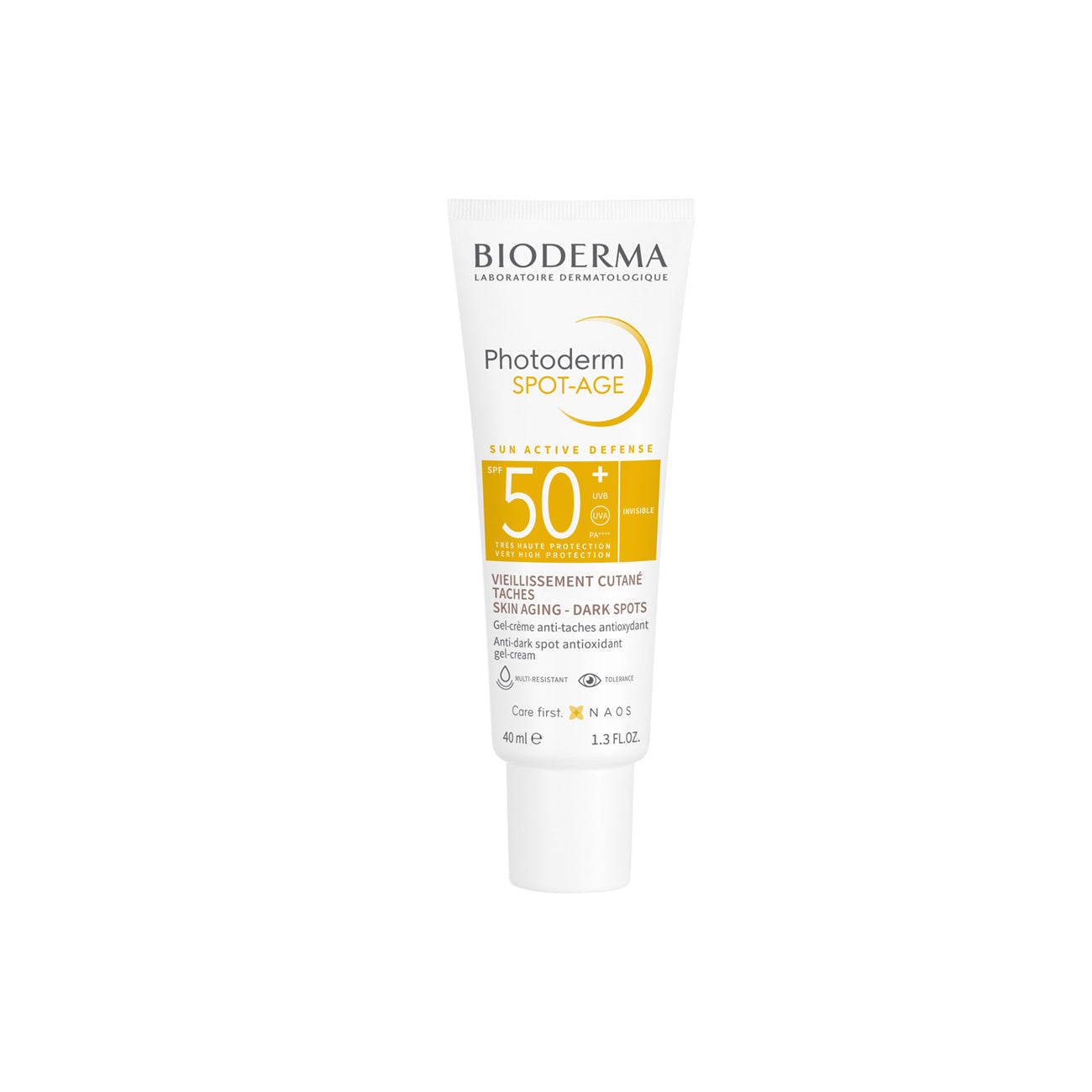Skin Care

Bioderma
Photoderm Spot-Age SPF50+ Anti-Spots Antioxidant Gel Cream - Sunspots and Skin Ageing
All of our products are 100% Genuine Pay CASH or by CARD upon Delivery
BIODERMA creates Photoderm SPOT-AGE SPF 50+ that combines the power of three active ingredients recognized by dermatologists [Vitamin C - Vitamin E - Centella asiatica] and solar filters for broad spectrum protection (UV - Visible Light - Infrared) and creates sun care that prevents and promotes the reduction of visible signs of photo-aging (spots, wrinkles, loss of firmness).
Cellular Bioprotection™ patent (1), real internal biological protection, preserves and stimulates the skin's natural defenses against the sun's harmful effects.
Vitamin E (2)and Vitamin C (3) selected in Photoderm SPOT-AGE SPF 50+ are highly stable. They provide complementary antioxidant protection against the effects of the broad spectrum (free radicals). One is lipophilic and the other is hydrophilic, allowing antioxidant protection for elements that constitute the cell.
Vitamin C is also able to regenerate Vitamin E allowing a sustainable action.
They also help to prevent the appearance of new spots.
The Vitamin C added to the product is coupled with a sugar that makes it three times more stable than the biological active form of vitamin C called L-ascorbic acid. Thus, its distribution at the skin level is controled. The separation with the sugar molecule to release the active vitamin C is done on contact with the skin cells. This allows controlled release of active vitamin C when needed!
Vitamin E is introduced under its most natural and active form, the alpha-Tocopherol. It blocks radical reactions allowing to protect cell membranes and limit photo-aging effects on the skin.
Centella asiatica (4) prevents damage to the dermis and regenerates the skin:
by inhibiting the degradation of extracellular matrix by hyaluronidase, elastase and MMP-1
by strenghthening the extracellular matrix by stimulating the collagen I production in the dermis
(1) Praetorius C, Sturm RA, Steingrimsson E. Sun-induced freckling: ephelides and solar lengitines. Pigment Cell Melanoma Res. 2013. doi:10.1111/pcmr.12232.
(2) Nakamura M, Morita A, Seité S, Haarmann-Stemmann T, Grether-Beck S, Krutmann J. Environment-induced lentigines: Formation of solar lentigines beyond ultraviolet radiation. Exp Dermatol. 2015;24(6):407-411. doi:10.1111/exd.12690.
(3) Cardinali G, Kovacs D. PM. Mécanismes de l’hyperpigmentation post-inflammatoire: ce que le lentigo actinique nous a appris. ADV. 2012.
(4) Murase D, Hachiya A, Kikuchi-Onoe M, et al. Cooperation of endothelin-1 signaling with melanosomes plays a role in developing and/or maintaining human skin hyperpigmentation. Biol Open. 2015;4(10):1213-1221. doi:10.1242/bio.011973.
Expiry Date: 12/2021





